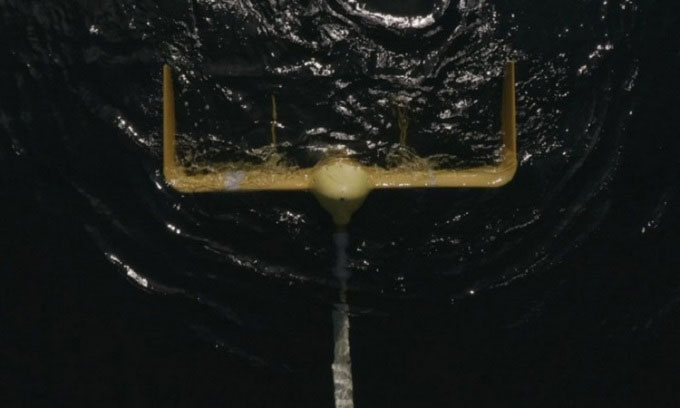The new winged turbine design will help the Faroe Islands produce all of its electricity from renewable sources by 2030.
The Swedish engineering company Minesto has developed a series of tidal turbines nicknamed “sea dragons”, resembling underwater flying machines. Minesto is currently operating two winged turbines in the waters off the Faroe Islands in the North Atlantic. These turbines generate electricity from ocean currents.

The “sea dragon” turbine swimming with the ocean current. (Photo: Minesto)
Tidal turbines are anchored to the seabed with 40-meter long metal cables. With a wingspan of 5 meters, each turbine can glide underwater in a figure-eight pattern, generating enough electricity to power 4 to 5 households.
The operating principle of this turbine model is very similar to the wind turbines developed by Kitekraft. Minesto’s winged turbine generates momentum and electricity through lift from the water flow. Meanwhile, Kitekraft’s design has the advantage of being able to recover during strong storms or high winds to prevent damage. Both companies’ systems are deployed in clusters, with each machine spaced apart to avoid collisions.
Minesto’s tidal turbines use integrated computers to move towards the prevailing ocean current for maximum efficiency. Electricity is transmitted through cables connected to another underwater cable leading to a control station near the town of Vestmanna on the coast.
The two turbines currently in use by Minesto contributed to supplying electricity to the Faroe Islands during last year’s trials. The company is now developing a turbine with a 12-meter wingspan, capable of producing 1.2 megawatts of electricity. A cluster of underwater turbines will be sufficient to power half of the households on the Faroe Islands (25,000 households). This project will help the islands achieve their goal of generating all electricity from renewable energy sources by 2030.


















































